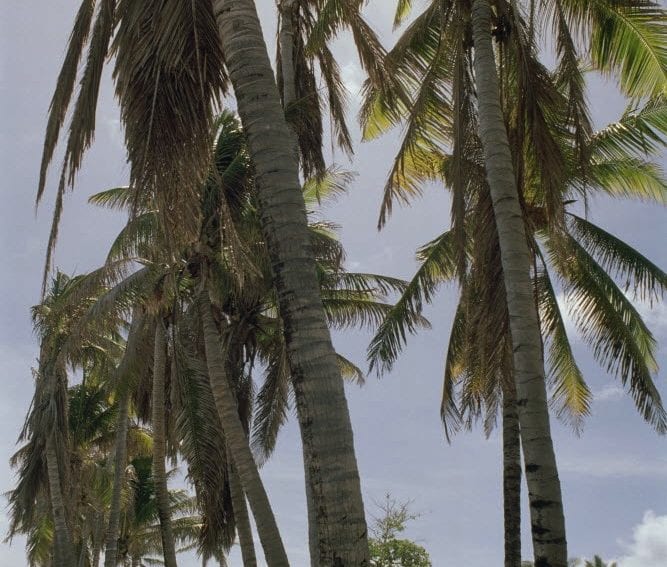By: Crispin Maslog
Send to a friend
The details you provide on this page will not be used to send unsolicited email, and will not be sold to a 3rd party. See privacy policy.
[MANILA] Environmental advocates and some prominent scientists in the Philippines are at loggerheads over the use of a chemical pesticide to fight off a major infestation that threatens to destroy the country’s multibillion-peso coconut industry.
The coconut scale insect (Aspidiotus rigidus), locally known as the “cocolisap”, has ravaged more than two million trees in five provinces since it started spreading three years ago, according to the Philippine Coconut Authority.
A government task force is using a multi-pronged approach to control the coconut infestation, such as pruning heavily infected leaves, injecting a systemic insecticide into tree trunks and enforcing quarantine on infected areas.
But environmental activists and scientists led by the Save the Coconut Movement assail the use of systemic insecticide. They say this contains a controversial chemical classified as a neonicotinoid that has harmful environmental and health effects.
The chemical (brand name Starkle) has reportedly been injected into the trunks of some 100,000 trees in one city with the approval of the Philippines’ Fertilizer and Pesticide Authority despite protests.
According to environmental advocate Bernie Lopez and University of the Philippines agronomist Ted Mendoza, neonicotinoid has been banned in the European Union because it is toxic to honeybees and other insects, and causes “colony collapse disorder”.
“The chemical attacks the nervous and immune systems of insects, birds and soil-bound animals. It is water-soluble and only five per cent is absorbed by target seeds or leaves. The rest goes into the soil and into adjacent rivers and lakes. Very little is known about neonicotinoid’s long-term effects,” Lopez tells SciDev.Net.
But other agricultural scientists such as former National Science Development Board chair Emil Javier justify the use of a “milder” form of neonicotinoid — Dinotefuran — as a “necessary evil” to protect the Philippine coconut industry, the world’s second biggest next to Indonesia, and which supports millions of local farmers and accounts for the lion’s share of agriculture exports.
“Dinotefuran is the newest, safest and most promising third-generation formulation that is only Category IV in toxicity, Category I being the highest. It is benign to humans and mammals,” Javier tells SciDev.Net.
He adds that the insecticide will be used intensively only in areas where the scale-insect outbreak is severe. The former science minister also points out that a second generation neonicotinoid, Actara, is already being used on mango trees and many vegetables but nobody has reported honeybee colony collapse.
But Lopez warns that the issue over the use of neonicotinoid also has economic implications. “Once foreign buyers learn we have been injecting toxins into our coconut trees, they may easily boycott our multibillion-peso copra and coconut oil exports in the blink of an eye, even if we prove these are scientifically safe,” Lopez says.
This article has been produced by SciDev.Net's South-East Asia & Pacific desk.














